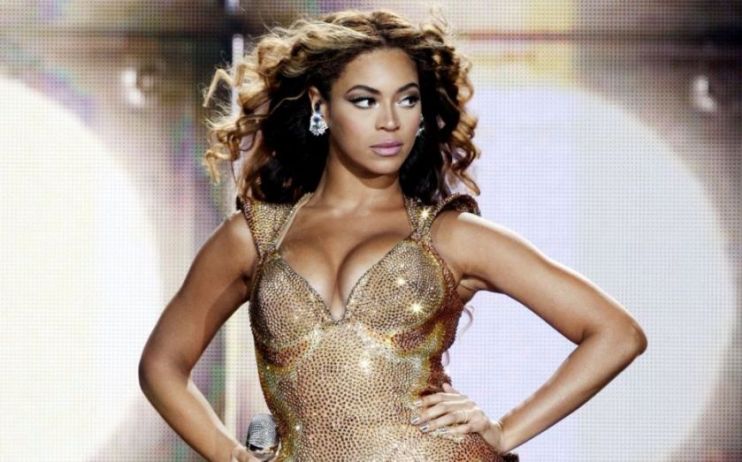Best of 2023: Beyonce and the world’s most exclusive party

“There are two types of people in the world. The people that are in Dubai right now. And us.” So went the meme, shared tens of millions of times across the world this weekend. The occasion – as if you haven’t already heard – was the launch of a self-described “icon”, the Atlantis The Royal hotel in Dubai, a $1.4bn monument to excess built over eight years on a strip of land dragged up from the sea itself like some parable from the bible.
And who better to launch an icon than the biggest icon of them all, Queen Bey, the world’s most bankable megastar, who hasn’t played a gig since 2018. In attendance: just 1,500 celebrities, influencers, some royalty, and a handful of journalists.
Debate has raged over whether Beyonce should have been there at all. A vocal supporter of the LGBT community, it’s been suggested that a lavish gig in a country where homosexuality is illegal sends a strange message. She’s said to have earned $24m for her hour-long performance, which might be the most paid to a musician for a single concert. Everyone has a price.
•••
“This is your ticket for the weekend,” a smiling hotel worker said as he handed me a specially commissioned pleated bangle flanked by stones that “represent wind and water”.
“If you lose it, no Beyonce.”
The next few hours went by in a blur of canapes and Moet. Then, as darkness fell, we chosen few were funnelled out into the cool Arabian night. Beyonce emerged on a plinth a mere 30 ft away, belting out Etta James’ At Last. She followed up with the hits: Halo, Ave Maria, Beautiful Liar, XO, Crazy in Love, the first live performance of Brown Skin Girl, alongside her daughter Blue Ivy.

We had all been told in no uncertain terms that recording was banned, our phones sealed up in little cases before the show, and a bouncer the size of Mike Tyson roamed the crowd, pouncing on anyone who brought one out, only for two more to flash into life behind him, an unwinnable game of whack-a-mole.
Singing, screaming and occasionally weeping beside me were influencers and models and minor celebs, all clad in outrageous eveningwear. A terrible man in a diamond-studded shirt claimed to be in the Netflix show Dubai Bling. A woman in a cocktail dress said she worked in real estate, while a group of loud English blokes had the unmistakable air of hedge fund managers. There was a strong queer presence, too, unsurprising given anti-gay laws are rarely enforced in the resorts, but it added to the confused messaging.
Everyone agreed they were watching something special. There were costume changes, a troupe of Lebanese dancers, fire-spinners. It ended with Beyonce being lifted into the air over a fire-spewing fountain as she sang Drunk in Love. She’s still got it. It’s hard to say if they got their money’s worth ($24m?) but they got Beyonce on spectacular form.
Following the gig, more fireworks than I’d ever seen filled the sky with explosions. This joyous, unabashed display of wealth is incredibly on brand for a city that prides itself on going bigger and higher than anyone has gone before.
Once a dusty, unremarkable port on the Persian gulf, Dubai found itself flush with unimaginable wealth when it struck oil in 1966. The city we know today wasn’t so much built as willed into existence, a kind of Alice in Wonderland version of American mall culture, filled with the most exclusive brands and expensive restaurants.
On its own terms, there’s no greater expression of mankind’s bravado and ambition at the end of the 20th century, like New York was in the 1920s. It’s a metropolis dropped in a desert, a money-is-no-object playground for the super-rich, where architects routinely probe the limits of both physics and good taste.
At the centre of it all is the Burj Khalifa, a skinny middle finger to western hegemony that hasn’t been topped since it was completed in 2010.
Atlantis The Royal doesn’t soar particularly high – at a mere 43 storeys, it sprawls louchely across the apex of the man-made Palm like a curvaceous stack of Jenga blocks. You can’t really conceptualise what $1.4bn looks like, but you can certainly see where it went.

It exists somewhere between impossible opulence and pornographic excess, impressing you almost against your will, your lizard brain cooing at the lights and shapes and sheer scale of it all before the more rational part of you has time to object.
You enter beneath a canopy of gold sculptures, pass a fountain belching fire and water, and arrive in a vast, aquarium-lined atrium. At the centre is a series of huge, polished metal blobs cascading from the ceiling like a drop of sweat from the brow of God himself.
Beyond is marble as far as the eye can see, every surface so highly polished it becomes indistinguishable from the channels of water that run throughout the hotel (I know at least one person who fell in).
Outside, Jay-Z was playing backgammon beside an empty pool circled by half a dozen lifeguards. After the gig, he and Beyonce would retire to the Royal Suite, the most expensive in the world, costing a reported $142,000 a night (presumably Bey got a discount).
“Thank you for being a part of this iconic event,” read the note slipped under my door on the final morning.
And it did feel iconic, like the whole world was watching this improbable gig performed to a tiny number of people for an absurd amount of money. Should she have done it? Should I have watched? I’m not sure – but it was one hell of a show.
